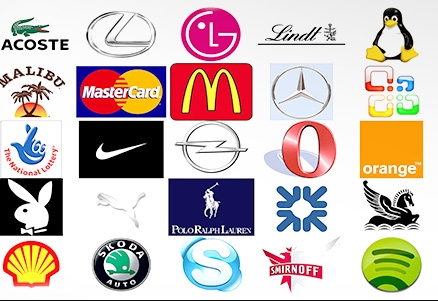Channel signage is a form of advertising that is placed in retail stores to promote specific products or brands. It is typically placed at the point of sale, where customers are most likely to make a purchase decision. Channel signage can take many different forms, including shelf talkers, endcaps, and floor displays. It is an effective way to reach customers and increase sales.
The Future of Channel Signage
**The Future of Channel Signage: Embracing Digital Transformation**
Channel signage has long been a cornerstone of retail marketing, providing businesses with a powerful tool to engage customers and drive sales. However, the advent of digital technology is transforming the landscape of channel signage, opening up new possibilities and redefining its role in the retail experience.
One of the most significant advancements in channel signage is the integration of digital displays. Digital signage offers unparalleled flexibility, allowing businesses to update content in real-time, display dynamic visuals, and interact with customers in new ways. By leveraging the power of digital technology, retailers can create immersive and engaging experiences that capture the attention of shoppers and drive conversions.
Another key trend in channel signage is the adoption of artificial intelligence (AI). AI-powered signage can analyze customer behavior, track engagement, and deliver personalized content based on individual preferences. This level of personalization enhances the customer experience, fostering a sense of connection and relevance. By leveraging AI, businesses can optimize their signage strategies and maximize their impact on sales.
Furthermore, the convergence of channel signage with mobile technology is creating new opportunities for customer engagement. By integrating QR codes or near-field communication (NFC) tags into their signage, retailers can provide customers with instant access to additional information, product reviews, or exclusive offers. This seamless integration between physical and digital channels enhances the customer journey and drives brand loyalty.
In addition to these technological advancements, the future of channel signage also lies in its integration with omnichannel marketing strategies. By aligning channel signage with online and social media campaigns, businesses can create a cohesive and consistent brand experience across all touchpoints. This omnichannel approach ensures that customers receive a seamless and memorable experience, regardless of how they interact with the brand.
As channel signage continues to evolve, it is essential for businesses to embrace these digital transformations. By leveraging the latest technologies and adopting innovative strategies, retailers can unlock the full potential of channel signage and create a truly immersive and engaging customer experience. The future of channel signage is bright, and it holds immense promise for businesses looking to drive sales and build lasting relationships with their customers.
How to Measure the ROI of Channel Signage
**Measuring the ROI of Channel Signage**
Channel signage plays a crucial role in driving brand awareness, influencing purchasing decisions, and enhancing customer experiences. However, quantifying the return on investment (ROI) of channel signage can be challenging. Here’s a comprehensive guide to help you measure the effectiveness of your channel signage investments:
**1. Define Clear Objectives:**
Before embarking on any measurement efforts, it’s essential to establish clear objectives for your channel signage. Determine what you aim to achieve, whether it’s increasing brand visibility, driving sales, or improving customer satisfaction.
**2. Establish Key Performance Indicators (KPIs):**
Identify specific metrics that align with your objectives. For example, if your goal is to increase brand awareness, you could track metrics such as impressions, reach, and engagement. If you aim to drive sales, consider tracking sales conversions, average order value, and customer lifetime value.
**3. Collect Data:**
Gather data from various sources to measure the performance of your channel signage. This could include sales data, customer surveys, website analytics, and social media engagement. Utilize technology such as QR codes or beacons to track customer interactions with your signage.
**4. Analyze Data and Calculate ROI:**
Once you have collected data, analyze it to determine the impact of your channel signage. Calculate the ROI by comparing the incremental revenue or other benefits generated to the cost of the signage investment. Consider factors such as the cost of production, installation, and maintenance.
**5. Consider Qualitative Factors:**
While quantitative metrics are essential, don’t overlook qualitative factors that can influence the ROI of channel signage. These include customer feedback, brand perception, and employee morale. Gather qualitative data through surveys, interviews, and observations to gain a comprehensive understanding of the impact of your signage.
**6. Make Adjustments and Optimize:**
Based on your analysis, make adjustments to your channel signage strategy to optimize its effectiveness. This could involve refining the design, placement, or messaging of your signage. Continuously monitor and measure the results to ensure that your signage is delivering the desired ROI.
**7. Seek External Validation:**
Consider seeking external validation from industry experts or third-party research firms to provide an unbiased assessment of your channel signage ROI. This can enhance the credibility of your findings and provide valuable insights for improvement.
By following these steps, you can effectively measure the ROI of your channel signage and make informed decisions to maximize its impact. Remember that measuring ROI is an ongoing process that requires regular monitoring and optimization to ensure that your signage investments continue to deliver value for your business.
Channel Signage Best Practices
**Channel Signage Best Practices**
Channel signage plays a crucial role in enhancing the customer experience and driving sales. By implementing effective signage strategies, businesses can effectively communicate their brand message, guide customers through their stores, and promote products and services. Here are some best practices to consider when designing and implementing channel signage:
**Clarity and Conciseness:**
Signage should convey information clearly and concisely. Use simple language, large fonts, and high-contrast colors to ensure readability from a distance. Avoid cluttering signs with excessive text or graphics that may overwhelm customers.
**Strategic Placement:**
Place signs in high-traffic areas where customers are likely to notice them. Consider the flow of traffic and the natural path customers take through the store. Signs should be positioned at eye level or slightly above to maximize visibility.
**Brand Consistency:**
Signage should align with the overall brand identity. Use consistent colors, fonts, and logos to create a cohesive and recognizable brand experience. This helps customers associate the signage with the business and its products or services.
**Product Promotion:**
Signage can effectively promote products and services. Use clear and concise messaging to highlight key features, benefits, and pricing. Consider using eye-catching graphics or images to draw attention to specific items.
**Directional Guidance:**
Signage can guide customers through the store and help them find what they need. Use directional signs to indicate the location of different departments, products, or services. Clear and concise directions can reduce customer frustration and improve the overall shopping experience.
**Call-to-Action:**
Signage should include a clear call-to-action that encourages customers to take a specific action. This could be purchasing a product, visiting a website, or signing up for a loyalty program. Use strong verbs and persuasive language to motivate customers.
**Digital Integration:**
Incorporate digital signage into your channel strategy. Digital signs offer flexibility, allowing you to update content quickly and easily. Use digital signage to display dynamic promotions, product information, or interactive experiences that engage customers.
**Maintenance and Upkeep:**
Regularly maintain and update signage to ensure it remains effective and visually appealing. Clean signs, replace damaged ones, and update content as needed. Well-maintained signage reflects positively on the business and enhances the customer experience.
By following these best practices, businesses can create effective channel signage that enhances the customer experience, drives sales, and strengthens brand recognition. Remember to consider the specific needs of your business and target audience when implementing signage strategies.
The Benefits of Using Digital Channel Signage
**The Benefits of Using Digital Channel Signage**
In today’s competitive business landscape, it is imperative to find innovative ways to engage with customers and promote your brand. Digital channel signage has emerged as a powerful tool that can help businesses achieve these goals.
Digital channel signage offers a myriad of advantages over traditional static signage. Firstly, it allows for real-time content updates, enabling businesses to quickly and easily display relevant information to their target audience. This flexibility is particularly valuable in fast-paced environments where information changes frequently, such as in retail stores or transportation hubs.
Moreover, digital channel signage is highly customizable, allowing businesses to tailor their content to specific demographics and locations. By leveraging data analytics, businesses can gain insights into their audience’s preferences and tailor their messaging accordingly. This targeted approach can significantly increase the effectiveness of marketing campaigns.
Another key benefit of digital channel signage is its ability to create immersive experiences. By incorporating dynamic visuals, videos, and interactive elements, businesses can captivate their audience and leave a lasting impression. This enhanced engagement can lead to increased brand awareness, customer loyalty, and sales conversions.
Furthermore, digital channel signage is cost-effective in the long run. While the initial investment may be higher than traditional signage, the ongoing costs are significantly lower. Digital signage eliminates the need for printing and distribution, reducing expenses and environmental impact.
In addition to its marketing benefits, digital channel signage can also improve operational efficiency. By displaying real-time information such as wait times, product availability, and directions, businesses can streamline customer interactions and reduce the need for manual assistance. This can lead to improved customer satisfaction and increased productivity.
In conclusion, digital channel signage offers a multitude of benefits for businesses of all sizes. Its flexibility, customization, immersive experiences, cost-effectiveness, and operational efficiency make it an invaluable tool for engaging customers, promoting brands, and improving overall business performance. By embracing digital channel signage, businesses can stay ahead of the curve and achieve their marketing and operational goals in the digital age.
How to Design Effective Channel Signage
**Channel Signage: A Guide to Effective Design**
Channel signage plays a crucial role in guiding customers through retail environments, enhancing brand recognition, and driving sales. To create effective channel signage, it’s essential to consider several key factors.
**1. Clarity and Conciseness:**
Effective channel signage conveys information clearly and concisely. Use concise language, legible fonts, and high-contrast colors to ensure readability from a distance. Avoid cluttering the signage with unnecessary details or jargon.
**2. Strategic Placement:**
The placement of channel signage is paramount. Position signs at eye level, along high-traffic areas, and near relevant products or services. Consider the flow of customers and ensure that signs are visible from multiple angles.
**3. Visual Appeal:**
Channel signage should be visually appealing to attract attention and engage customers. Use vibrant colors, eye-catching graphics, and creative designs to make the signage stand out. However, avoid overwhelming the viewer with excessive visual elements.
**4. Brand Consistency:**
Channel signage should align with the overall brand identity. Use consistent colors, fonts, and logos to create a cohesive brand experience. This helps customers recognize and associate the signage with your brand.
**5. Call to Action:**
Effective channel signage includes a clear call to action. Encourage customers to take a specific action, such as visiting a particular department, purchasing a product, or signing up for a loyalty program. Use action-oriented language and make the call to action prominent.
**6. Durability and Maintenance:**
Channel signage should be durable enough to withstand the rigors of a retail environment. Choose materials that are resistant to fading, scratching, and moisture. Regular maintenance is also crucial to ensure that the signage remains clean and legible.
**7. Digital Integration:**
In today’s digital age, consider integrating digital elements into channel signage. QR codes, interactive displays, and digital signage can provide customers with additional information, enhance the shopping experience, and track customer engagement.
**8. Evaluation and Optimization:**
Once channel signage is implemented, it’s important to evaluate its effectiveness. Track metrics such as customer engagement, sales conversions, and brand recall. Use this data to optimize the signage design, placement, and messaging over time.
By following these guidelines, you can create effective channel signage that enhances the customer experience, drives sales, and strengthens your brand identity. Remember to prioritize clarity, visual appeal, strategic placement, and ongoing evaluation to ensure that your signage delivers maximum impact.
The Importance of Channel Signage in Retail
**The Importance of Channel Signage in Retail**
In the competitive retail landscape, every touchpoint with customers holds immense significance. Channel signage plays a crucial role in shaping the customer experience and driving sales. It serves as a powerful tool for communicating brand messages, guiding shoppers, and enhancing the overall ambiance of the store.
Channel signage encompasses a wide range of displays, including aisle markers, shelf talkers, endcaps, and digital signage. These elements work together to create a cohesive and informative environment that helps customers navigate the store and make informed purchasing decisions.
Aisle markers, for instance, provide clear direction and help shoppers locate specific product categories. Shelf talkers highlight product features, promotions, and pricing, providing additional information that may not be immediately apparent from the packaging. Endcaps, strategically placed at the end of aisles, showcase featured products or special offers, drawing attention to high-margin items.
Digital signage offers a dynamic and engaging way to convey brand messages and product information. It can display videos, images, and interactive content that captures shoppers’ attention and enhances their shopping experience. By leveraging technology, retailers can tailor signage to specific customer segments and deliver personalized messages.
Effective channel signage goes beyond mere information dissemination. It also plays a vital role in creating a positive brand image. Well-designed signage reflects the brand’s personality, values, and aesthetic, reinforcing its identity in the minds of customers. Consistent signage across all channels ensures a seamless brand experience, fostering customer loyalty and trust.
Moreover, channel signage can contribute to increased sales. By highlighting promotions, new products, and special offers, it encourages impulse purchases and drives incremental revenue. Additionally, clear and informative signage reduces customer confusion and frustration, leading to a more enjoyable shopping experience and increased customer satisfaction.
In conclusion, channel signage is an indispensable element of retail success. It guides shoppers, communicates brand messages, enhances the store ambiance, and drives sales. By investing in effective channel signage, retailers can create a positive and memorable customer experience that fosters brand loyalty and ultimately boosts profitability.
Q&A
**Question 1:** What is the purpose of channel signage?
**Answer:** To identify and promote specific channels or products within a retail store.
**Question 2:** What are the different types of channel signage?
**Answer:** Header signs, shelf talkers, endcaps, floor graphics, and aisle markers.
**Question 3:** What are the key elements of effective channel signage?
**Answer:** Clear messaging, eye-catching design, and strategic placement.
**Question 4:** How can channel signage improve sales?
**Answer:** By attracting attention, providing product information, and influencing purchasing decisions.
**Question 5:** What are some best practices for using channel signage?
**Answer:** Use high-quality materials, keep messaging concise, and test different designs to optimize effectiveness.
**Question 6:** How can channel signage be used to enhance the customer experience?
**Answer:** By providing easy navigation, product recommendations, and a more engaging shopping environment.
Conclusion
Channel signage plays a crucial role in retail marketing by effectively communicating brand messages, promoting products, and influencing consumer behavior. It serves as a powerful tool for retailers to capture attention, provide information, and drive sales. By leveraging strategic placement, eye-catching designs, and clear messaging, channel signage can enhance the customer experience, increase brand awareness, and ultimately contribute to the success of retail businesses.





Leave A Comment